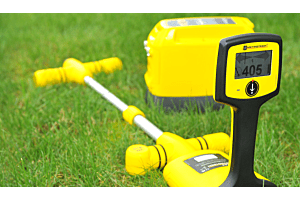
Navigating the realm of underground utility locating requires a precise understanding and operation of Cat and Genny equipment. Despite their crucial role in preventing hazardous mishaps, improper usage or overlooking certain guidelines can lead to costly mistakes. Here, we unfold common missteps to avoid ensuring the utmost accuracy and safety in your locating endeavors.
Misinterpretation Due to Improper Usage
One primary pitfall is the improper usage of Cat and Genny equipment, which can lead to misinterpretation of signals. It's essential to acquaint oneself with the manufacturer's instructions meticulously. Every device comes with unique features and functionalities that demand a thorough understanding before operation.
Over-reliance on Single Equipment Readings
While Cat and Genny are designed for precise utility detection, solely relying on their readings is risky. It's always prudent to cross-verify findings using alternative methods like ground-penetrating radar or visual inspections, creating a well-rounded understanding of the underground utilities present.
Neglecting Regular Maintenance
Regular maintenance is the cornerstone of ensuring the equipment’s reliability and longevity. Overlooking cleaning, lubrication, and calibration checks can harbor inaccuracies in utility locating, potentially leading to severe damages during excavation projects.
Overlooking Calibration and Setup
Before diving into any project, it's imperative to ensure your equipment is calibrated according to the manufacturer guidelines. A thorough pre-use inspection for any damage or wear and ensuring all components are functioning correctly is crucial for accurate utility locating.
Ignoring Environmental Factors
Environmental factors like soil conditions, nearby structures, and electromagnetic interference can significantly affect Cat and Genny's accuracy. Being heedless to these factors can lead to false readings, thus making a thorough assessment of the surrounding environment vital before initiating any utility locating work.
Avoiding Professional Training
Sometimes, lack of professional training can lead to inaccurate utility locating. Engaging in training sessions or workshops can provide invaluable insights into avoiding common mistakes and enhancing your proficiency with Cat and Genny equipment.
Failing to Address Equipment Limitations
Every equipment has its limitations. For instance, Cat and Genny may struggle in accurately detecting non-metallic pipes or cables. Recognizing these limitations and preparing for them in advance can prevent false positives or negatives during utility detection.
Inadequate Documentation
Not properly marking or documenting the located utilities can lead to confusion or damage during excavation. Clear markings and detailed records of the markings are indispensable for avoiding any disruptions or accidental damages.
Conclusion
verting these common mistakes requires a blend of proper training, diligent maintenance, and an in-depth understanding of Cat and Genny equipment alongside the environmental factors at play. Steering clear of these pitfalls not only safeguards against potential hazards but also significantly uplifts the accuracy and efficiency in utility locating tasks.
FAQs
- Why is it important to stay updated on industry standards and best practices?
Staying updated on industry standards and best practices is crucial because it ensures that you are following the most current guidelines and regulations. This helps to maintain safety, efficiency, and compliance within your industry.
- How can proper training and certification benefit my work?
Proper training and certification provide you with the necessary knowledge and skills to perform your job correctly and safely. It also demonstrates your competency and professionalism to clients and employers.
- What are some key maintenance and inspection procedures that should be followed?
Some important maintenance and inspection procedures include regular equipment checks, proper cleaning and storage, calibration verification, and adherence to manufacturer guidelines. These procedures help to ensure the equipment's functionality and accuracy.
- What are the risks associated with improper use of Cat and Genny equipment?
Improper use of Cat and Genny equipment can lead to inaccurate utility locates, potential damage to underground infrastructure, and increased safety hazards for workers. It is vital to use the equipment correctly to avoid these risks.
- How can I choose the right Cat and Genny equipment for the job?
To choose the right Cat and Genny equipment, consider factors such as the type of utility being located, the terrain, the depth of the utilities, and any specific features or capabilities required. Consulting with industry experts or manufacturers can also help in selecting the appropriate equipment.
- What safe digging practices should I follow to minimize risks?
Safe digging practices include obtaining accurate utility locates, using proper excavation techniques, following local regulations, wearing appropriate personal protective equipment (PPE), and having proper emergency response plans in place.
- Why is it important to properly calibrate and set up Cat and Genny equipment?
Properly calibrating and setting up Cat and Genny equipment ensures accurate readings and reliable results. It helps to prevent false positives or negatives, minimizes errors, and improves the overall effectiveness of utility locating efforts.
- What are some common mistakes to avoid when locating underground utilities?
Some common mistakes to avoid include rushing through the process, not double-checking the readings, overlooking potential obstructions or interferences, and failing to communicate effectively with other team members. Attention to detail and thoroughness are key to avoiding these mistakes.
- How do environmental factors impact Cat and Genny accuracy?
Environmental factors such as soil conditions, moisture levels, electromagnetic interference, and proximity to other utilities can affect the accuracy of Cat and Genny equipment. Awareness of these factors and proper adjustments or precautions are necessary to maintain accurate results.
- How can I stay updated on industry standards and best practices?
To stay updated, you can join professional organizations or associations related to your industry, attend industry conferences or workshops, subscribe to industry publications, participate in training programs, and regularly engage with industry experts and peers.






Login and Registration Form